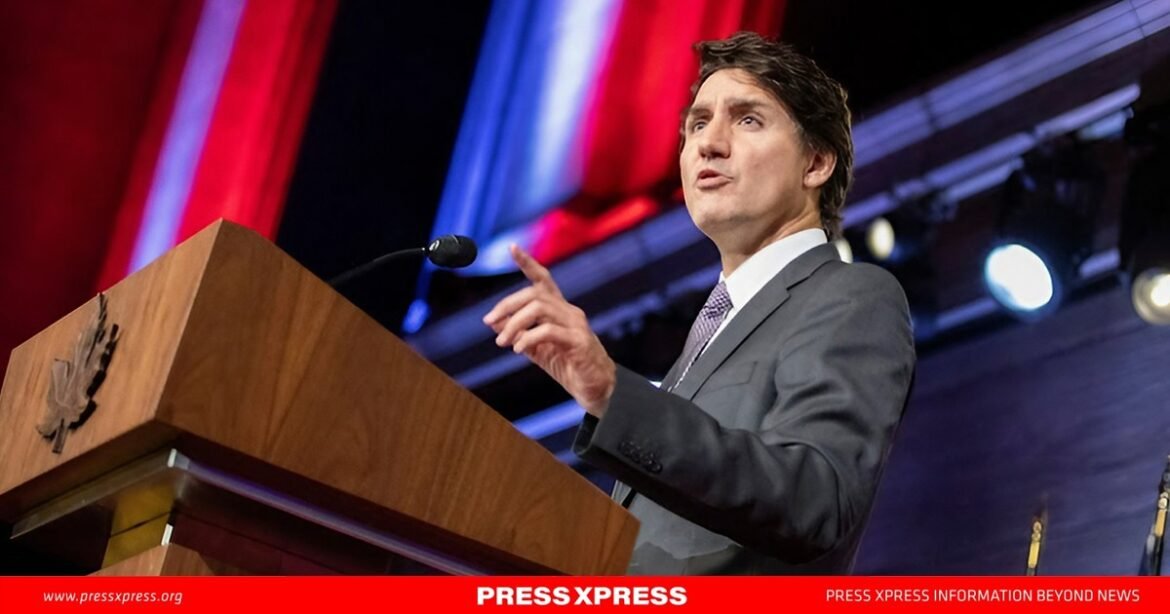Key Highlights:
- Trudeau’s government survived the second confidence motion, defeated by a 207-121 vote.
- Conservative leader Pierre Poilievre led the motion, citing economic mismanagement and rising crime.
- Trudeau relied on support from the Bloc Québécois and NDP.
- Polls show Conservatives with a 20-point lead, adding pressure on Trudeau ahead of the 2025 election.
Canadian Prime Minister Justin Trudeau has successfully navigated a second parliamentary confidence vote within a week, securing his minority Liberal government against another attempt by the opposition Conservatives to bring it down.
The motion, defeated by 207 to 121 votes, was driven by criticisms of Trudeau’s handling of economic issues such as rising prices and increased crime. Despite these challenges, support from the Bloc Québécois and the New Democratic Party (NDP) helped Trudeau to maintain power, who faces increasing voter fatigue after almost nine years in power. The motion failed after Conservative leader Pierre Poilievre again fell short in his effort to gain the backing of other political parties in parliament.
The vote needed the majority of the 338 members of parliament (MPs) in order for it to pass.
The Context
Conservative leader Pierre Poilievre, buoyed by a 20-point lead in public opinion polling, has been eager to push for an election. Poilievre has capitalized on Trudeau’s declining popularity, driven by concerns over rising living costs, rising inflation, taxation, and increasing crime.
These issues have become central in the Conservative Party’s strategy, led by Pierre Poilievre, to portray Trudeau as out of touch with the economic realities faced by Canadians. One of the key criticisms revolves around the federal carbon tax, which has increased living costs, further fueling public frustration and giving the Conservatives a strong platform ahead of the next general election in October 2025.

Poilievre, emboldened by polls showing the Conservatives leading with 42% support, sought to capitalize on Trudeau’s dwindling popularity. However, his efforts to oust the prime minister were stymied by the Bloc Québécois and the New Democratic Party (NDP), both of whom chose not to align with the Conservatives in toppling the government.
Following the results, the Liberal Party stated on its X account: “He’s (Pierre Poilievre) using his time in Parliament to push for deep cuts to the services that families rely on – but we’re focused on delivering real solutions for Canadians.”
Bloc Québécois and NDP’s Influence Remain Crucial
The role of the Bloc Québécois and NDP in Trudeau’s survival cannot be understated. The Bloc, led by Yves-François Blanchet, provided crucial support in exchange for policy concessions, including enhancements to seniors’ pensions. While the Bloc’s allegiance is likely temporary, this strategic decision has helped secure short-term stability for Trudeau’s government.

The NDP, under Jagmeet Singh, also played a pivotal role in ensuring Trudeau’s survival. Although the NDP shares concerns with the Conservatives about rising economic pressures, it remains ideologically closer to the Liberals on issues like climate change, social welfare, and progressive taxation. Singh’s party, currently polling at 22%, has little to gain from triggering an election that could hand victory to the Conservatives. By maintaining its support for Trudeau, the NDP hopes to extract further policy wins while avoiding political upheaval.

In a statement following the vote, Poilievre blamed the NDP and the Bloc Québécois for its failure, saying the former had “sold out working Canadians” while the latter was “letting down Quebecers”.
Trudeau’s Vulnerabilities and Conservative Momentum
The Liberal Party, holding 153 seats, is under increasing pressure following by-election losses in key strongholds. Meanwhile, the Conservatives, with 119 seats, continue to gain ground, driven by leader Pierre Poilievre’s efforts to exploit Trudeau’s declining popularity. Although the NDP’s withdrawal from its coalition agreement has made Trudeau more vulnerable, its refusal to support Poilievre’s right-wing agenda has provided temporary relief for the Trudeau administration.
Challenges Ahead for Trudeau
The recent confidence votes in Canada’s parliament underscore a growing perception of political fatigue surrounding Prime Minister Justin Trudeau’s government, which has been in power for nearly a decade. These votes serve as a barometer of Trudeau’s standing in parliament, and the increased frequency or intensity of such votes can suggest that his government is losing support, even among its traditional allies.
Political fatigue refers to the public and parliament’s growing weariness with a long-serving administration, often due to perceived stagnation in leadership, policy gridlock, or unmet expectations. In Trudeau’s case, the fatigue may stem from challenges like managing economic instability, inflation, healthcare reforms, and handling domestic controversies, such as the handling of Indigenous issues or ethics scandals.
Over time, long-serving governments can also suffer from a “trust deficit,” where repeated attempts to address problems are viewed with skepticism. Confidence votes, therefore, not only test the government’s survival but highlight underlying issues such as waning public trust, intra-party discontent, and opposition pressures, all of which indicate a difficult political road ahead for Trudeau.
Lastly, with opposition forces gaining momentum, Trudeau’s government faces an uphill battle in the lead-up to the 2025 general election. His ability to address the key concerns of Canadians while maintaining crucial alliances will determine whether he can continue his nearly decade-long leadership or whether the Conservatives will capitalize on growing discontent to usher in a new political era for Canada.


